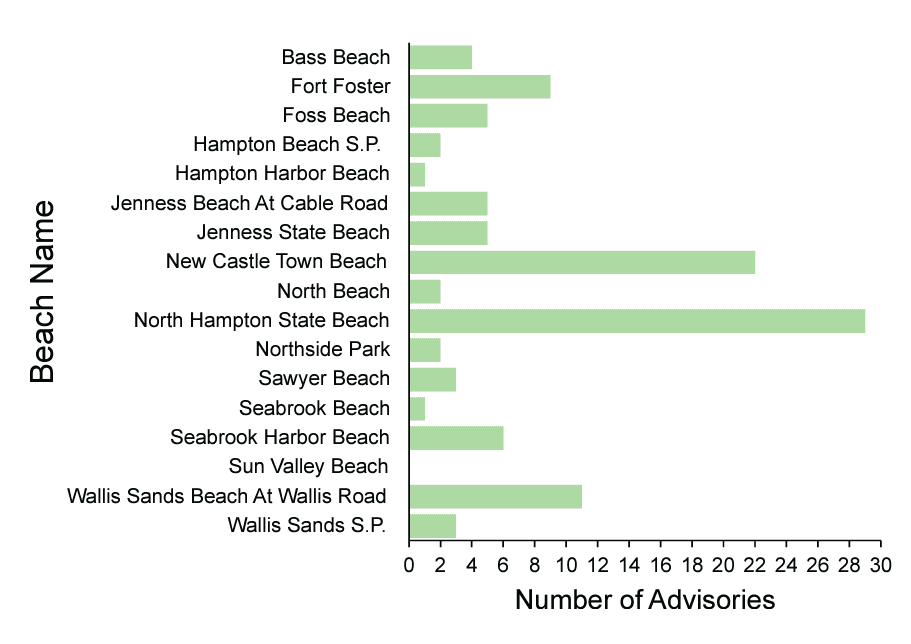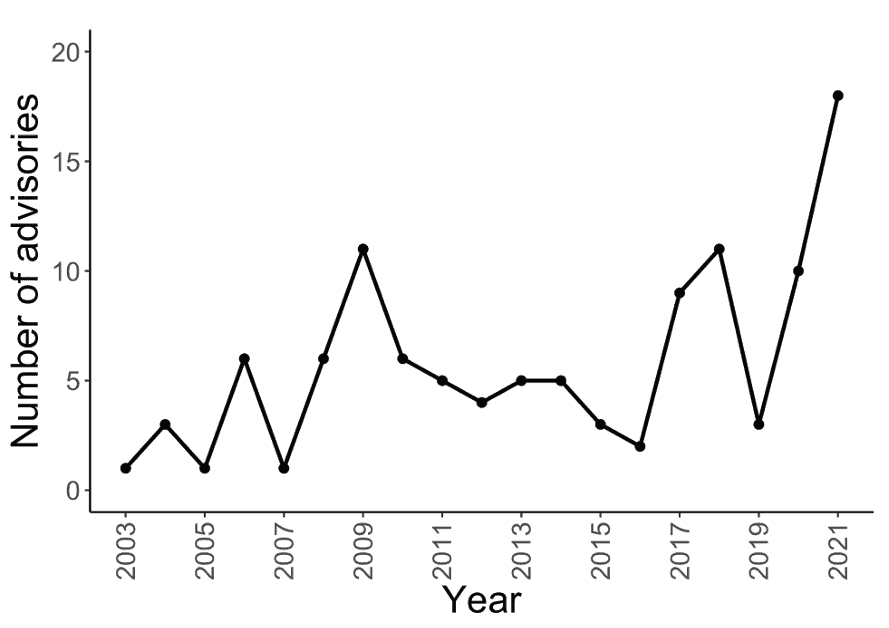Beach Advisories
Beach Advisories
How many times did beach advisory days occur on public tidal beaches in the Piscataqua Region Watershed due to bacterial pollution, and have beach advisory days changed over time?
Across the Piscataqua Region’s 16 public tidal beaches in New Hampshire and one public tidal beach in Maine, beach advisory days occurred more than the PREP goal of 1% of beachdays from 2017 to 2021. There was a significant increase in New Hampshire beach advisory days since 2003.
The Piscataqua Region Watershed is home to 16 public tidal beaches in New Hampshire, as well as Fort Foster in Kittery, Maine. Since 2003, between one and 18 advisories have been issued per year across these beaches due to elevated counts of enterococci — a type of bacteria in our guts that aid in digestion and are used as an indicator of fecal bacteria. Sun Valley Beach, one of the sixteen New Hampshire beaches, is the only beach that never had an advisory. Maine’s Fort Foster has had between one and four advisories issued per year since 2003 (Figure 19.1).
Advisories between 2003 and 2021 have affected 306 of 31,822 summer beach days (1.0%) between Memorial Day and Labor Day (Figure 19.2). Within the last five summers (2017 – 2021), there have been 162 affected summer beach days out of 8,449 total (1.9% of beach-days). In 2021, New Hampshire saw the highest number of beach advisories and the highest number of beach advisory days since 2003, with 18 advisories affecting seven beaches for a total of 52 days (3.1% of total beach-days). At Fort Foster, there have been no beach advisories since 2016. The highest number of advisories Fort Foster has seen (four) was back in 2009.
Most advisories reported in 2020 and 2021 impacted North Hampton State Beach and New Castle Town Beach. These two beaches are historically known for having issues with elevated enterococci levels. Together, they have accounted for nearly half of all posted beach advisories since 2003, having a combined total of 51 advisories out of 110.
The number and duration of advisories varies from year to year depending on different environmental conditions, especially due to excessive rainfall events and other severe weather. Such events can facilitate stormwater runoff, which can transport fecal matter into coastal waters. Unfortunately, due to the increase in number of beach advisories between 2017 and 2021, New Hampshire tidal beaches in the region did not continue to meet PREP’s goal of beach advisories affecting fewer than 1% of summer beach-days.
Acknowledgments and Credit
Amanda Giacchetti (UNH) with contributions from Abigail Lyon (PREP).
Beach Advisories – Extended Report
Includes methods, data, and additional discussion not included in the Printed Edition.

